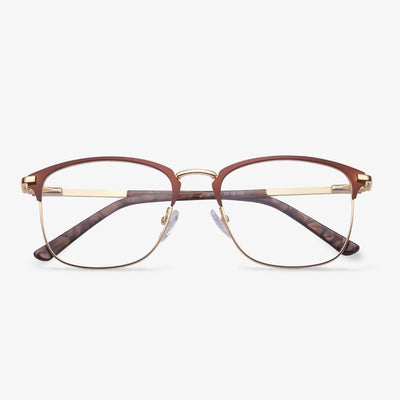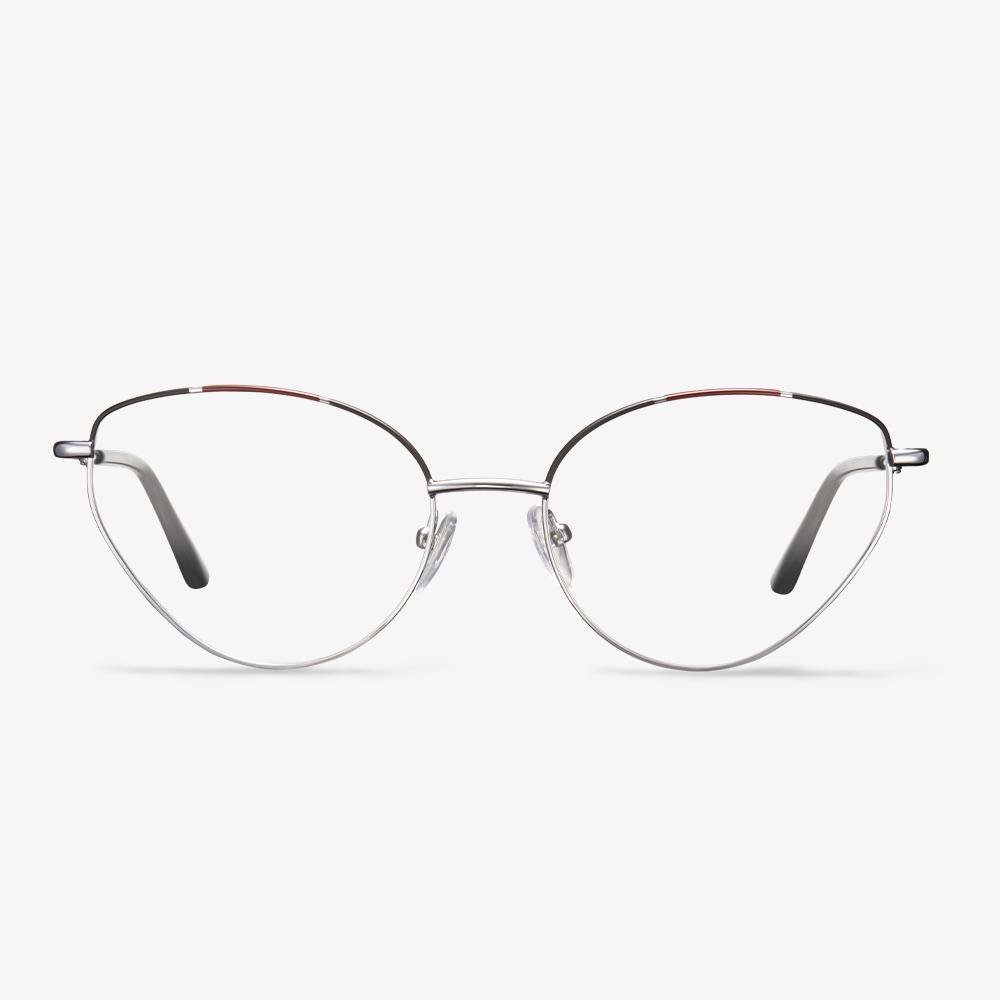Bifocal Lens
Bifocal lenses have two observation areas separated by visible lines, a larger observation distance area, and a smaller reading area. It may take some time for people who are wearing bifocal glasses for the first time to get used to the lenses. This is mainly due to learning how to move the eyes between the observation distance area and the reading area. Some people will also find that there will be an 'image jump' phenomenon at the visible line between the distance and the reading area, especially for those with limited mobility, who must look down when walking. The best way to get used to bifocals is to wear them as much as possible.
What is blue light?
To prevent blue light, we must first understand what blue light is. The visible light with a wavelength range of 400-500 nanometers is called blue light. The light sources used in daily LED lighting and display products, including mobile phones, flat panels, and TVs, are mostly LED light sources excited by blue light. However, not all blue light is harmful to the human body. The human eye has an extremely low tolerance to blue light radiation in the 400-440 nanometer range. When the light intensity enters this threshold, photochemical damage is likely to occur. However, blue light radiation in the range of 459-490 nanometers is essential for regulating the human body's circadian rhythm and can affect the secretion of human melatonin, which in turn has an impact on the body's biological clock, alertness, and mood.
Scientifically effective anti-blue light lenses must not only block harmful blue light but also cannot filter beneficial blue light. Most of the ineffective anti-blue light products on the market currently have two types of problems. One is that there is almost no protective effect on the blue light in the vulnerable zone of the human eye. The other is excessive protection, shielding the blue light spectrum in the beneficial band so that the blue light that is beneficial for physiological adjustment cannot enter the human eye. At the same time, the color of the lens is yellow, which is prone to color shift, aggravating visual fatigue, and even inducing the risk of myopia.
Choose high-quality lenses.
As resin lens technology becomes more and more mature now, resin lens has gradually become popular, so the use of resin lens is the trend. Now resin coated lenses are very popular now. There are anti-reflection films and hard films (anti-wear films) anti-UV films. Anti-reflection film can improve the transmittance of light, making people see more clearly, at the same time, because it can reduce the reflection, the lens is more beautiful in appearance. Hard coating films can effectively protect the lens surface from wear and tear and can resist the damage of hard objects, to prolong the life of the lens. UV-resistant films block the harmful ultraviolet rays of sunlight. For example, the UV400 lens is good for engineers who work outdoors for a long time.
Seek professional help.
Many plates, TR glasses have fixed nose pads that cannot be changed. But the metal material of the nose pad can be changed. An optometrist who is a professional optometrist may not be a good adjuster. There is no conflict between the two. The skills about that shall be developed in a lot of practice. For a seemingly easy operation, its strength is invisible real skills.
The benefits of bifocal glasses
People with myopia often need to wear bifocal glasses after the appearance of presbyopia. The upper and lower parts of the lens have different diopters. The upper part is used to see distant objects, and the lower part is used to read and do close work. In addition to presbyopia, some people who work long hours in close quarters need bifocals to reduce eye strain. Studies have shown that long-term nearsightedness is the main cause of myopia. According to the adjustment principle of the eyeball and the height of the patient diopter, a reasonable measure is to wear myopia glasses with full correction when seeing the blackboard in class. When reading and writing. they should take off glasses or wear low myopia glasses. But the practice of continuously removing and putting on or changing glasses is clearly unrealistic. Bifocal glasses will solve this problem.
Can you wear blue light glasses while driving?
The damage of blue light has a cumulative effect. The longer the exposure time is, the more serious the damage of retinal cells will be, which will eventually lead to irreversible damage of the structure and function of the retina. Once the retina has permanent damage, degeneration will directly affect the metabolism and function of photoreceptor cells, resulting in vision loss. It depends on the glasses you're wearing. The function of anti-blue light glasses depends on the material of the glasses. Some blue light glasses have a special anti-reflective coating, which can reduce glare. These glasses are definitely helpful when driving at night.
The inadequacies of bifocals
The field of vision is smaller than that of the single vision lens, especially for the close view. For example, reading and reading newspapers need to make it coordinated with the head movement, there are optical defects of image jump and image displacement. There is a boundary, and it is easy to be seen that wearing a bifocal lens exposes age. Bifocals clearly demarcate the near and far regions, affecting appearance and vision. And when far view and close view change, the objects will jump. Because most myopic patients have a lag in the adjustment response, wearing bifocal lenses not only does not delay the development of myopia but has side effects. Therefore, bifocals are not suitable for teenagers to control myopia, and only a few special patients need to wear bifocals.


















































